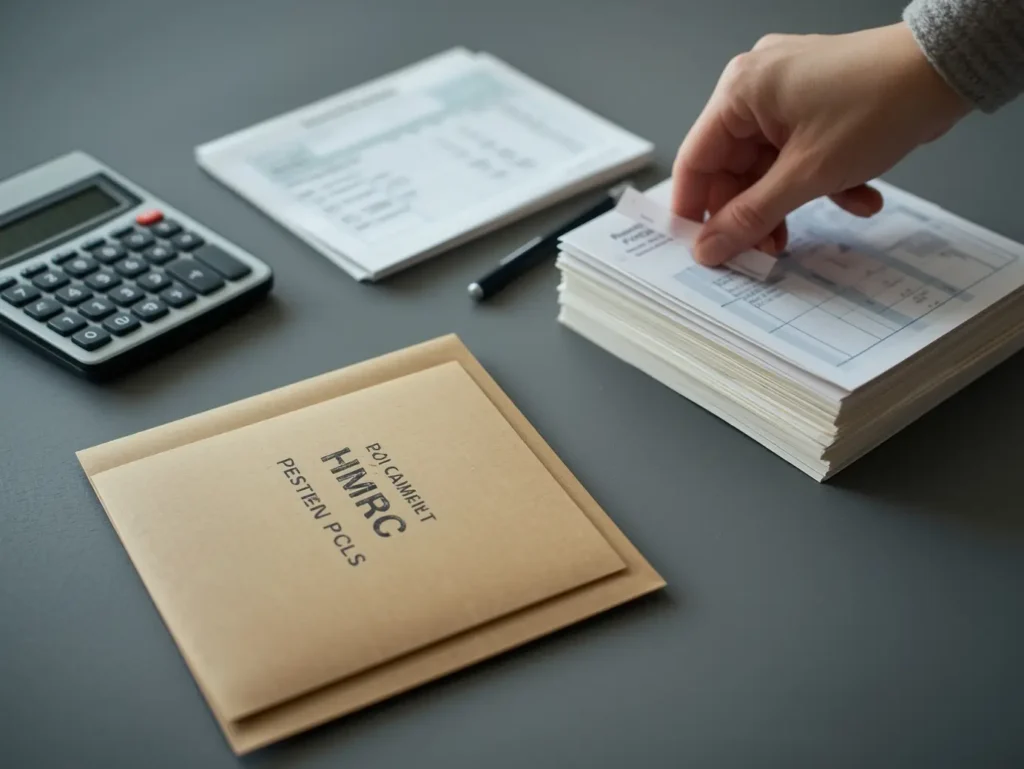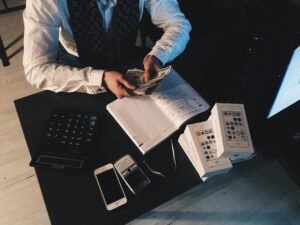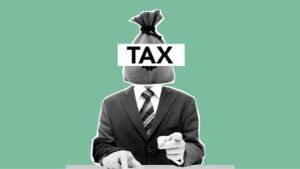HMRC is investigating cases where people took a pension lump sum (often PCLS “tax-free cash”) and later sent money back to the scheme. Unless the original payment was a genuine error by the scheme, a “return” is usually treated as a new contribution (or an unauthorised payment/refund) and can trigger tax charges or the recycling rules. If you’ve repaid a lump sum, gather evidence now and be ready to explain why it was repaid and how it was recorded by your scheme. HMRC can assess unauthorised payment tax and ask scheme administrators to report and pay related charges.
Table of Contents
ToggleTL;DR
- “Returning” a lump sum isn’t normally allowed. If the payment wasn’t a scheme error, sending it back is typically a fresh contribution (subject to annual/MPAA limits) or creates unauthorised payment issues.
- Unauthorised payment tax on the member is 40%, plus a 15% surcharge if unauthorised payments in 12 months reach ≥25% of your pot. Schemes may also face a scheme sanction charge (up to 40%).
- Recycling rule: using tax-free cash to significantly increase contributions can be a deemed unauthorised payment under HMRC tests.
- PCLS and new allowances: since 6 April 2024, tax-free cash is capped by the Lump Sum Allowance (usually £268,275) and LSDBA (£1,073,100).
- MPAA: if you’ve flexibly accessed taxable DC income, your contributions may be limited to £10,000 a year.
- If HMRC writes: respond promptly, provide scheme letters/bank statements, and clarify whether the repayment was a genuine error correction or a contribution. Schemes must report unauthorised payments via the Event Report.
Why is HMRC investigating returned pension lump sums?
Because “sending the money back” is not a standard authorised route. HMRC distinguishes between:
- Genuine error corrections by the scheme (authorised in limited cases), and
- Money you choose to pay in after receiving a lump sum (normally a contribution), or a refund the scheme has no power to make (risking unauthorised payment treatment).
The Pensions Tax Manual sets out when payments are authorised and when “recycling” or unauthorised payment rules bite. It also sets reporting duties on schemes and liabilities for members.
Who is at risk? Scenarios where returning a lump sum triggers issues
- You took PCLS, then paid the same (or similar) amount back in: HMRC may apply the recycling rules if your contributions significantly increased and there was pre-planning, or simply treat it as a standard contribution (subject to annual allowance/MPAA)—but not a reversal.
- You asked the scheme to “undo” a lump sum after changing your mind: schemes rarely can. Unless it was a genuine scheme error, “undoing” is not permitted and attempts to refund/offset can become unauthorised. Ombudsman cases have upheld refusals to reverse withdrawals where no HMRC “genuine error” existed.
- You repaid an overpayment the scheme made: if it was a genuine error/overpayment, the correction is generally permissible without unauthorised consequences—document it carefully.
- The scheme paid the wrong kind of lump sum or outside the time window (for example, PCLS not correctly linked to the benefit or paid outside timing rules): mistakes can cause unauthorised payments unless covered by the “genuine errors” provisions.
What rules apply if I repaid my lump sum to the scheme?
- If the scheme made an error (for example, an overpayment or inadvertent payment), HMRC recognises limited genuine error cases where money can be corrected without triggering unauthorised payment charges. Evidence matters.
- If you simply sent money back, HMRC will usually treat it as a contribution, not a reversal. It then counts towards your annual allowance/MPAA and may interact with the recycling rules if funded by recent tax-free cash.
- If the scheme refunds you contrary to the rules, the refund itself can be an unauthorised payment—creating a 40% member charge (and potentially a scheme sanction charge).
Could I face an unauthorised payment tax charge?
Yes—if HMRC decides a payment is unauthorised, the member charge is 40% of the amount. A 15% surcharge applies where unauthorised payments to you in a 12-month period reach 25% or more of your pot. Schemes may owe a scheme sanction charge (normally up to 40%, reducible in some circumstances).
Pull-quote: “A ‘return’ of lump sum is not a rewind button. Unless it was a genuine scheme error, HMRC will likely treat your payment back as a new contribution—or worse, an unauthorised payment.”
Context: what changed and why HMRC cares
From 6 April 2024 the Lifetime Allowance was abolished and replaced by the Lump Sum Allowance (LSA) (usually £268,275) and the Lump Sum and Death Benefit Allowance (LSDBA) (£1,073,100). HMRC now tests tax-free entitlements against these allowances. Record-keeping is crucial when multiple lump sums have been taken over time.
At the same time, HMRC continues to target recycling (using tax-free cash to fund contributions), unauthorised payments, and mis-coded corrections—areas where people sometimes try to “reverse” decisions. Schemes must report these via the Event Report, so HMRC sees them.
Key rules explained
Pension Commencement Lump Sum (PCLS)
- Usually up to 25% of your pot, but now limited by the LSA (£268,275) across all schemes unless you have protection.
- Must be properly linked to the start of a pension and paid within specific timing rules around entitlement.
Trivial commutation and small pots
- Trivial commutation (mainly DB) and small pot lump sums (up to £10,000 per DC arrangement) have their own rules and typically don’t engage recycling where done correctly—though mis-payments can still be unauthorised.
Unauthorised payments/benefits
- Anything that isn’t an authorised member or employer payment is unauthorised. Member charge 40%, possible 15% surcharge, and potential scheme sanction charge on the provider/trustees.
Recycling rules
- Where you take tax-free cash and (with pre-planning) increase contributions significantly, HMRC can deem an unauthorised payment. Detailed tests apply; keep evidence if your increase was for unrelated reasons (for example, bonus, inheritance).
“Refund of lump sum” vs “repayments” vs “contributions”
- True refunds generally require a genuine error by the scheme (not simply a change of mind).
- If you send money back voluntarily, it’s typically a contribution—subject to the annual allowance or MPAA if triggered.
- If a scheme improperly refunds or offsets benefits, it can create an unauthorised payment.
Reporting obligations
- Schemes must report unauthorised payments via the Event Report; members then pay the charge (or mandate the scheme to do so).
Tax exposures and calculations
Potential charges (member)
- Unauthorised payment charge: 40% of the unauthorised amount.
- Unauthorised payment surcharge: +15% if unauthorised payments in 12 months reach ≥25% of your pot.
Potential charges (scheme)
- Scheme sanction charge: up to 40%, which can be reduced when the member’s charge is paid.
Example calculation (member)
| Scenario | Unauthorised amount | 40% member charge | 15% surcharge (if triggered) | Total member tax |
| A: One-off unauthorised payment | £20,000 | £8,000 | n/a | £8,000 |
| B: Multiple unauthorised payments totalling ≥25% of pot | £50,000 | £20,000 | £7,500 | £27,500 |
| C: Improper “refund” paid out of scheme | £10,000 | £4,000 | n/a | £4,000 |
Notes: The surcharge applies only if the aggregate unauthorised payments to you in 12 months are ≥25% of your pot. The scheme may also face a sanction charge.
Dates, deadlines and evidence to keep
- Allowances from 6 April 2024: LSA £268,275; LSDBA £1,073,100 (subject to protections). Keep a running ledger of all lump sums taken before and after 6 April 2024.
- MPAA: £10,000 (2023/24 onwards). Track contributions if you’ve flexibly accessed taxable DC income.
- Event Report timing: scheme administrators report unauthorised payments for the tax year; members must declare and pay by Self Assessment deadlines if not using a mandate. Keep letters, bank statements, scheme communications and timelines.
How HMRC investigates and common HMRC letters
- Letters typically come from HMRC Pension Schemes Services asking for:
- copies of scheme correspondence showing why a payment was made or returned,
- bank evidence of the original lump sum and any “return”,
- whether the scheme treated the return as a contribution, error correction, or refund,
- your contribution history around the time (recycling test), and
- event reporting references.
- copies of scheme correspondence showing why a payment was made or returned,
- Schemes are required to report unauthorised payments; HMRC then matches member returns or mandates and may raise assessments with penalties or interest if late.
What to do if you’re contacted
- Read the letter carefully: note deadlines and exactly what HMRC wants.
- Assemble evidence: scheme letters, bank statements, screenshots or secure messages, and any adviser notes explaining circumstances and timing.
- Clarify the scheme’s treatment: ask your scheme administrator whether your “return” was logged as a contribution, a genuine error correction, or a refund—and whether an Event Report was filed.
- Check allowances: confirm your remaining LSA/LSDBA, and whether MPAA was triggered earlier.
- Test recycling risk: were contributions significantly increased using lump-sum proceeds, with pre-planning? Document intent and funding sources.
- Decide how to pay any charge: via mandate to the scheme (if offered) or Self Assessment; keep copies.
- Respond on time and keep a copy. If you disagree, set out your reasoning with references to the Pensions Tax Manual and attach evidence.
Edge cases and defences
- Genuine scheme error: HMRC recognises limited cases where corrections are authorised; the facts matter. Show that the payment didn’t reflect your intention (for example, wrong amount/date/type due to admin failure).
- Member changed mind: not a genuine error. Ombudsman cases show schemes are right to refuse reversals where no HMRC basis exists.
- Restitution of mistaken payments: where money was never intended (for example, bank/processing mistake), returns can avoid unauthorised status—document swiftly.
- Reasonable excuse (for penalties or late reporting): process failures beyond your control may mitigate penalties, but don’t remove the tax itself.
- FOS/FCA angles: if you had regulated advice and believe it was unsuitable or administratively mishandled, complaint routes may apply (Financial Ombudsman Service or the firm’s process).
Practical examples
Example 1: Changed mind after PCLS
Amira takes £40,000 PCLS then wires £40,000 back to her SIPP asking to “undo”. The provider logs it as a contribution (no genuine error). Amira already triggered MPAA last year; her £40,000 breaches the £10,000 MPAA—creating an annual allowance charge. No unauthorised payment arises, but tax is still due.
Example 2: Recycling risk
Ben takes £60,000 PCLS in May and increases monthly contributions so that, within 12 months, contributions are significantly higher, funded by that cash according to his own notes. HMRC can deem an unauthorised payment under recycling rules. Potential 40% charge on the deemed amount.
Example 3: Genuine overpayment
Chloe receives £5,000 extra due to a calculation error. The scheme writes explaining the overpayment and asks for repayment. She returns it with a clear paper trail. Treated as a genuine error correction—no unauthorised tax.
Example 4: Improper refund
Dan’s scheme pays a “refund” of his earlier lump sum without a genuine error basis. HMRC treats the refund as an unauthorised payment: 40% member charge, and the scheme may owe a scheme sanction charge.
Table: Returned PCLS vs genuine refund vs fresh contribution
| Situation | What it really is | Typical treatment | Key risks |
| Member sends lump sum back with no scheme error | Contribution | Counts to annual allowance/MPAA | AA/MPAA charge; recycling if pre-planned with PCLS |
| Scheme paid wrong amount/type/date (admin failure) and corrects it | Genuine error correction | Can be authorised if within HMRC “genuine error” rules | Must prove facts, timing and scheme process |
| Scheme pays back lump sum without power to do so | Unauthorised payment | 40% member charge; possible scheme sanction | #ERROR! |
How to get help
- MoneyHelper: impartial guidance on allowances, MPAA and reclaiming over-taxation.
- Your provider or trustees (scheme administrator): ask how your payment was coded and whether an Event Report was filed.
- Regulated financial advice: complex situations (recycling tests, multi-scheme records, transitional certificates) justify paid advice.
- Complaints: if you believe a provider error caused loss, use the firm’s process and, if unresolved, the Financial Ombudsman Service.
FAQ
Can I reverse a PCLS within a cooling-off period?
Not usually. Cooling-off applies to contracts or contributions, not to tax-pointed benefit payments. Unless it was a genuine scheme error, a PCLS isn’t reversible and sending money back is treated as a new contribution.
What is an unauthorised payment and the tax rate?
It’s any payment that isn’t an authorised member or employer payment. The member charge is 40% and a 15% surcharge can apply where unauthorised payments in 12 months reach ≥25% of your pot.
What’s the scheme sanction charge?
A tax on the scheme (administrator) for certain unauthorised payments—up to 40%, typically reducible if the member’s unauthorised payment charge is paid.
Do the recycling rules apply if I just increased contributions later?
HMRC looks for pre-planning and a significant increase funded by the tax-free cash. If that fits, a deemed unauthorised payment can arise. Keep evidence if your rise had unrelated causes.
What are the new LSA and LSDBA limits?
From 6 April 2024 the LSA is usually £268,275; the LSDBA is £1,073,100 (higher if protected). Excess lump sums are taxed at your marginal rate.
If I’ve flexibly accessed my pension, can I still pay back large sums?
You can contribute, but if you’ve triggered the MPAA, DC contributions above £10,000 can face a tax charge. The “pay-back” counts like any contribution.
What evidence should I keep?
All scheme letters, bank records, and timelines. HMRC often asks for proof of error versus member choice, and how the scheme reported the transaction.
How will HMRC find out?
Schemes must report unauthorised payments via the Event Report, and HMRC cross-checks Self Assessment and scheme data.
Conclusion and next steps
If you’ve returned a pension lump sum, assume HMRC will not treat it as a rewind—unless the scheme made a genuine error and can prove it. Pin down how your scheme recorded the transaction, test allowances and recycling risk, and be ready to respond to HMRC with a clean evidence pack. Acting early typically reduces penalties and stress.





